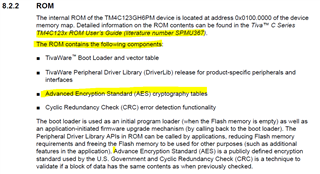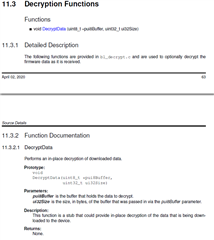Other Parts Discussed in Thread: EK-TM4C123GXL, EK-TM4C1294XL
Hello,
I've been reading the TivaWare Boot Loader User's guide - SPMU301E April 2014 - Revised April 2020 document (link below). I noticed that it looks like there is a way to handle an encrypted image/bitstream for the Tiva part, but it looks like it requires #define configuration statements. This info can be found on page 44 described by the define for "BL_DECRYPT_FN_HOOK". Because this is a #define does this mean that you can only decrypt with a flash boot loader and not the ROM?
I'm trying to figure out how to do the following.
1. Encrypt my production CCS binary file output so the binary I send to customers is encrypted.
2. Load this encrypted binary via the USB interface using the DFU. A big question here is, can this be done with the ROM boot loader code or do I need to write my own bootloader to handle this, or use bl_config.h and bl_config.c?
Does anyone have any comment/advice that could help me get my mind pointed in the correct direction and be confident in the path I choose for my development?
Boot loader user's guide:
Thanks



